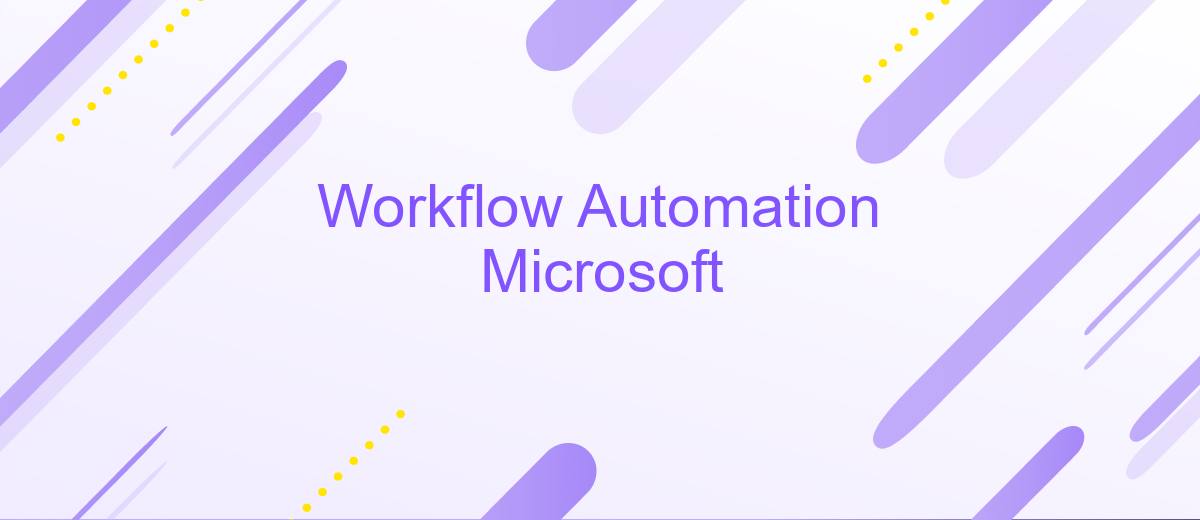Workflow Automation Microsoft
Workflow automation with Microsoft tools has revolutionized the way businesses operate, streamlining processes and enhancing productivity. By leveraging solutions such as Power Automate, Microsoft Teams, and SharePoint, organizations can automate repetitive tasks, reduce human error, and improve collaboration. This article explores the benefits and practical applications of Microsoft’s workflow automation tools, providing insights into how they can transform your business operations.
Overview
Workflow automation with Microsoft offers a powerful way to streamline and enhance business processes. By leveraging tools like Power Automate, organizations can automate repetitive tasks, integrate multiple services, and improve overall efficiency. Users can create custom workflows that trigger actions based on specific events, reducing the need for manual intervention.
- Automate repetitive tasks to save time and reduce errors.
- Integrate various Microsoft services, such as Outlook, SharePoint, and Teams.
- Create custom workflows with a user-friendly interface.
- Enhance collaboration and communication within teams.
- Monitor and manage workflows with real-time analytics.
For more advanced integrations, services like ApiX-Drive can be utilized to connect Microsoft tools with other third-party applications seamlessly. This enables a more comprehensive automation strategy, allowing businesses to focus on growth and innovation. By implementing workflow automation, companies can achieve higher productivity and better resource management.
Benefits

Implementing workflow automation with Microsoft offers numerous benefits, significantly enhancing productivity and efficiency. By automating repetitive tasks, businesses can reduce the time employees spend on mundane activities, allowing them to focus on more strategic initiatives. This not only increases overall productivity but also improves job satisfaction as employees are freed from monotonous work. Additionally, automation ensures a higher level of accuracy by minimizing human errors, leading to more reliable and consistent outcomes.
Another major advantage is the seamless integration capabilities provided by Microsoft’s automation tools. With services like ApiX-Drive, businesses can effortlessly connect various applications and systems, creating a unified workflow environment. This integration facilitates better data flow and communication between different departments, resulting in more informed decision-making processes. Moreover, the scalability of these solutions allows businesses to adapt and grow without the need for significant additional resources, making workflow automation a sustainable and cost-effective choice for long-term success.
Key Features

Microsoft Workflow Automation offers a comprehensive suite of features designed to streamline business processes and enhance productivity. By leveraging advanced automation tools, users can minimize manual tasks, reduce errors, and improve overall efficiency.
- Seamless Integration: Easily connect with a wide range of applications and services, including popular tools like Microsoft Office 365, SharePoint, and Teams. Services like ApiX-Drive further expand integration capabilities, allowing for smooth data flow between disparate systems.
- Customizable Workflows: Tailor workflows to meet specific business needs with a user-friendly interface. Drag-and-drop functionality simplifies the creation of complex automation sequences without the need for extensive coding knowledge.
- Real-Time Monitoring and Analytics: Gain insights into workflow performance with real-time monitoring and detailed analytics. Track key metrics, identify bottlenecks, and make data-driven decisions to optimize processes.
- Scalability: Adapt to changing business requirements with scalable solutions that grow with your organization. Microsoft Workflow Automation ensures that your automated processes remain efficient and effective, regardless of scale.
With these key features, Microsoft Workflow Automation empowers businesses to achieve higher levels of efficiency and productivity. By integrating seamlessly with various applications and providing robust customization options, it addresses the unique needs of any organization.
How It Works

Workflow automation in Microsoft leverages a combination of tools and services to streamline and optimize business processes. By integrating various applications and automating repetitive tasks, organizations can achieve higher efficiency and productivity.
To get started, users need to define the specific workflows they wish to automate. This involves identifying the tasks, triggers, and actions that make up the workflow. Once the workflow is mapped out, users can utilize Microsoft Power Automate to create and manage these automated processes.
- Identify tasks and triggers
- Map out the workflow
- Use Microsoft Power Automate to create automation
- Test and refine the workflow
For more advanced integrations, services like ApiX-Drive can be used to connect various applications seamlessly. ApiX-Drive enables users to integrate multiple services without needing extensive coding knowledge, providing a user-friendly interface to set up and manage integrations. This ensures that all necessary data flows smoothly between systems, further enhancing the automation capabilities within the Microsoft ecosystem.
Use Cases
One of the primary use cases for Workflow Automation in Microsoft environments is streamlining repetitive tasks. For instance, businesses can automate the process of data entry from various sources into a central database, significantly reducing the time and effort required. This is particularly beneficial in sectors such as finance and human resources, where accuracy and efficiency are paramount. By automating these tasks, companies can minimize human error and focus on more strategic activities.
Another significant use case is the integration of different software applications to ensure seamless data flow across platforms. Services like ApiX-Drive can be instrumental in this regard, enabling businesses to connect various applications without the need for extensive coding skills. For example, a company can automate the synchronization of customer data between its CRM and email marketing tools, ensuring that all departments have access to up-to-date information. This integration not only enhances productivity but also improves the overall customer experience by providing timely and accurate information.
FAQ
What is workflow automation in Microsoft?
How can I start with workflow automation in Microsoft?
Can I integrate third-party applications with Microsoft workflow automation?
What are some common use cases for workflow automation in Microsoft?
How can I simplify the integration and automation of workflows between different services?
Apix-Drive is a simple and efficient system connector that will help you automate routine tasks and optimize business processes. You can save time and money, direct these resources to more important purposes. Test ApiX-Drive and make sure that this tool will relieve your employees and after 5 minutes of settings your business will start working faster.

